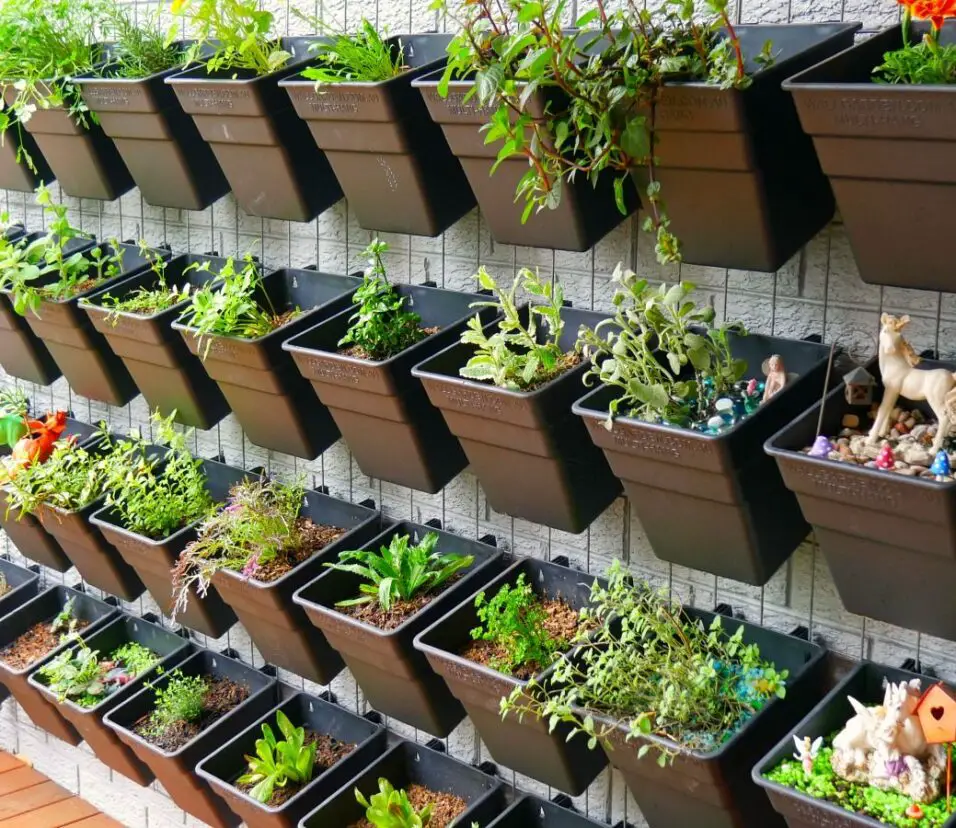Where Is Commercial Gardening Practiced
Introduction
Where Is Commercial Gardening Practiced: Spanning continents and climates, commercial gardening’s reach encompasses an array of geographic regions, each offering unique advantages and challenges. From the temperate fields of North America to the lush landscapes of Southeast Asia, commercial gardening adapts to local conditions, harnessing the natural resources of each area to yield bountiful harvests and vibrant blooms.
In North America, the vast expanses of farmland in the United States and Canada cater to a substantial portion of the world’s commercial market gardening output. Europe’s fertile soils contribute to a rich tradition of vegetable and flower cultivation, while Africa’s diverse climates give rise to a variety of crops and agricultural approaches. The vast plantations of South America, often known for coffee, cocoa, and tropical fruits, showcase the region’s role in the global horticultural trade.
Moving to Asia, the intensive agricultural practices of China and India reflect the demands of their immense populations. Meanwhile, Australia’s arid interior fosters innovations in water-efficient gardening techniques. These examples highlight the adaptability of commercial gardening to diverse terrains, climate conditions, and consumer demands.

Where does most commercial gardening take place?
Commercial gardening is particularly common in citrus-producing states like Arizona, California, and Florida. It is used across the U.S., but mostly in these places.
Commercial gardening is mostly done in agricultural areas with good weather, land, and soil. These regions are usually rural and cover wide landscapes to support large-scale operations needed to meet market needs.
Due to their excellent conditions, commercial gardening thrives in the Central Valley in California, the Pampas in Argentina, and the Nile Delta in Egypt. These places have long growing seasons, temperate temperatures, and reliable water sources for year-round crop development.
To efficiently distribute harvested produce to consumers, proximity to highways, railways, and ports is essential. This often results in commercial gardening clusters near key transportation corridors, enabling fast and cost-effective delivery of fresh goods to local and international markets.
These important regions’ climatic advantages, fertile land, and efficient logistics support large commercial gardening businesses. These agricultural centers maintain the supply chain and provide a consistent flow of fruits, vegetables, and other horticulture items to fulfill global consumer demand as fresh produce consumption rises.
Where commercial farming is practice?
Commercial farming is common in Punjab and Haryana. Commercial farming occurs worldwide where conditions support large-scale operations. These regions are intentionally chosen for commercial crop and livestock production.
The US and Canada’s large agricultural regions support considerable commercial farming. Fertile Midwest soils, known as the “Corn Belt” and “Breadbasket,” contribute to world grain output. South America’s Amazon Basin and Pampas are recognized for their large-scale soybean, corn, and meat farms.
To efficiently distribute harvested produce to consumers, proximity to highways, railways, and ports is essential. This often results in commercial gardening clusters near key transportation corridors, enabling fast and cost-effective delivery of fresh goods to local and international markets.
Where is commercial farming practiced in India?
Commercial farming is popular in sparsely populated Gujarat, Tamil Nadu, Punjab, Haryana, and Maharashtra. Indian commercial crops include Wheat, Maize, Tea, Coffee, Sugarcane, Cashew, Rubber, Corn, Banana, and Cotton.
Different states and regions in India have agro-climatic conditions that support large-scale commercial farming. Commercial farming is popular in Punjab, Haryana, and Uttar Pradesh’s Indo-Gangetic Plain. This region has good land, Ganges and tributary water, and a well-developed irrigation infrastructure. These elements help grow wheat, rice, and sugarcane.
The western state of Gujarat is another commercial farming hotspot for cotton, groundnuts, and horticulture. The wine business relies on Maharashtra’s Nashik district’s grape cultivation. Andhra Pradesh and Telangana thrive in rice production, while Karnataka and Tamil Nadu specialize in coffee, tea, spices, and floriculture.
Why is commercial farming practiced?
Firstly, commercial agriculture thrives on large-scale production and economies of scale. Farmers can benefit from cost advantages by cultivating extensive tracts of land or raising substantial livestock populations, such as bulk purchasing and efficient mechanization.
The scale of commercial farming allows for the adoption of modern technologies and machinery, increasing productivity and yield. This, in turn, contributes to food security, providing a stable supply of food products to local communities and beyond. Additionally, commercial farming often involves specialized cultivation of high-demand crops or intensive livestock production, leading to higher profits for farmers.
Global trade and export opportunities also drive commercial farming. Furthermore, proximity to transportation infrastructure, including highways, railways, and ports, is crucial for efficient distribution of the harvested produce to consumers. This often leads to the establishment of commercial gardening hubs near major transportation corridors, allowing for quick and cost-effective movement of fresh goods to markets both domestically and internationally.
However, the transition to large-scale commercial farming can sometimes raise concerns about environmental sustainability, resource depletion, and loss of biodiversity. Balancing the economic benefits of commercial farming with responsible land and resource management is crucial to ensure long-term agricultural sustainability and food security.
What climatic zone designation is given to Texas for gardeners to determine suitable plant choices?
Texas is designated into multiple climatic zones, each with unique characteristics that influence gardening choices. The primary climatic zones in Texas include the subtropical, arid, and temperate regions. These designations play a crucial role in helping gardeners make informed decisions about plant selection and cultivation practices.
The southeastern parts of Texas, including cities like Houston and Galveston, fall within the subtropical climate zone. These areas experience mild winters and hot, humid summers, allowing for a diverse range of plants to thrive, such as citrus trees, palms, and tropical flowers.
Moving westward, the state transitions into arid and semi-arid zones, which are prevalent in regions like El Paso and parts of West Texas. Here, gardeners must contend with hot temperatures, low rainfall, and soil that may have poor water retention. Succulents, cacti, and drought-resistant native plants are popular choices in these areas due to their adaptability to arid conditions.
Central and northern Texas, including cities like Dallas and Austin, generally fall within temperate zones. These regions experience distinct seasons, with hot summers, cooler winters, and moderate rainfall. A wide variety of plants, from ornamental shrubs to annual and perennial flowers, can thrive in these zones.
According to the USDA Plant Hardiness Zone Map, which zone does Texas occupy in terms of gardening?
Texas has many gardening zones due to its unique temperature and geography, according to the USDA Plant Hardiness Zone Map. Texas has Zones 6b on the north panhandle and 9a on the south Gulf Coast.
Central Texas, encompassing San Antonio and Houston, is in Zone 9a, with warm winters and hot, humid summers. Gardeners may grow various tropical plants. Near the southern tip of Texas, in Brownsville, Zone 9b has milder winters and longer growing seasons. Tropical and subtropical flora thrive in this subtropical climate.
These zones help Texas gardeners choose plants that flourish in their temperature and climate zones.
For gardeners, which zone classification from the USDA Plant Hardiness Map is attributed to the state of Texas?
The northern parts of Texas, including cities like Amarillo and Lubbock, generally fall within Zone 6b. This signifies colder winters and shorter growing seasons, impacting the types of plants that can thrive in these areas.
As you move southward, cities like Dallas and Austin often fall within Zone 8a. This classification indicates milder winters and a longer growing season, offering gardeners a broader spectrum of plant options.
In central regions like San Antonio and Houston, Zone 9a prevails, characterized by mild winters and hot, humid summers. This opens up possibilities for cultivating an extensive variety of plants, including those that thrive in subtropical climates. As you approach the southernmost tip of Texas, in locations like Brownsville, Zone 9b is prominent.
In terms of gardening and plant cultivation, which USDA zone is assigned to Texas based on its climate and growing conditions?
The panhandle and northern Texas fall into Zone 6b, which has cooler winters and shorter growing seasons. Moving south, Dallas and Austin correlate with Zone 8a, indicating milder winters and longer growing seasons.
Houston and San Antonio are often in Zone 9a, with mild winters and warm, humid summers. This climate range offers temperate and subtropical plant species. Zone 9b dominates in southern Texas, such Brownsville. This zone classification has milder winters and a longer growth season, making tropical and subtropical plants thrive well. Texas’s USDA zones reflect its climatic variability, allowing gardeners to choose plants that thrive in their regions.

Conclusion
The vast tapestry of commercial gardening unfurls across the globe, weaving together a story of human innovation, regional diversity, and agricultural abundance. From the expansive fields of North America to the thriving plantations of Africa, each region contributes its own unique colors to this horticultural mosaic. The worldwide practice of commercial gardening embodies not only the pursuit of sustenance and economic prosperity but also a deep-rooted connection between people and the land they cultivate.
As we traverse the continents, it becomes evident that commercial gardening is a dynamic response to the intricate interplay of climate, geography, and cultural heritage. The collective efforts of farmers, horticulturists, and agricultural scientists resonate in every orchard, vineyard, and crop field, illustrating how human ingenuity harmonizes with nature’s resources.
As markets expand, urban populations grow, and environmental considerations intensify, the practices of commercial gardening will continue to evolve. Nurtured by the lessons of the past and guided by innovation, it is a powerful force that feeds societies, stimulates economies, and honors the beauty of the natural world. In its boundless diversity, commercial gardening stands as a testament to the remarkable ability of humanity to cultivate not just crops, but also a sustainable and harmonious relationship with the Earth.








